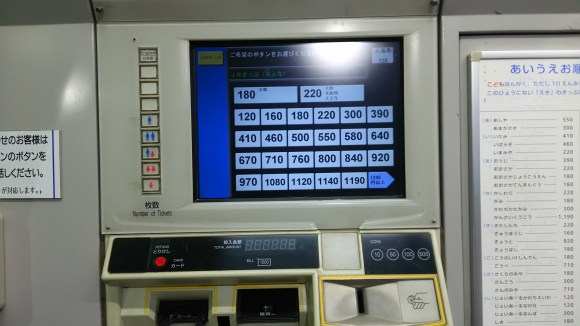
Most Japanese machines adhere to the philosophy that traveling is not about the destination, but the journey.
Although on the whole convenient and well managed, the train system in Japan can be quite overwhelming for first-timers. It first involves studying the giant map above and finding your desired station which has the required fare printed on it.
Then once you’ve found it, you approach the machine and press the corresponding button with the same price. However, if you are like me a typical trip probably goes something like this:
▼ “Okay, where am I going…ah there it is, 490 yen!”
▼ “Wait a minute. Was that 460 yen or 490 yen?”
▼ “Huh, there is no station 460 yen away….
What’s up with that? I hope no one is waiting behind me.”
▼ “Nope.”
▼ “Okay, so that’s 260 yen.”
▼ “I accidentally brought a bunch of plastic stars instead of money again.
Uggh, THERE HAS GOT TO BE A BETTER WAY!”
Actually it’s hardly a mind-crippling experience, but recently the question has been floated over Twitter in Japan, “Wouldn’t it be better if they put the name of the destination on the touch screen?”
After all when you go to a vending machine you usually just press “Coke.” You don’t search through a catalog of drinks to look up the price of a Coke and than select that price on the machine. For starters, it would require all drinks to have a unique price, and furthermore it’s just plain dumb.
The original poser of the question got a lot of support in the form of over 100,000 likes and praises of, “Finally, someone’s asking the questions that need to be asked.” However, there was also a lot of defenders of the conventional method of buying tickets citing simplicity and cost as the main reasons.
“If you put the map on the touch screen, wait times will drastically increase while people search through it. The way it is now is a simple one touch process.”
“Reading the names of the stations takes more time than reading a simple number. The line ups would become huge.”
“It’s a lot cheaper to just distribute uniform machines to all the stations rather than customizing them.”
The waiting time excuse seems weak. Anyone concerned about that is probably a commuter or otherwise frequent user of a particular train line and would be better off simply buying a prepaid card to avoid the problem altogether, if they haven’t already.
And for the cost, considering everything is digital, creating a simple set-up system where staff inputs the station the machine is installed in and all fares are automatically calculated from that point is not exactly cracking the human genome. In other words, it wouldn’t take a huge financial effort to convert the display to focus on the station names rather than the fares to go there.
And in fact efforts have already been made to do this. Some train lines have screens that include station names along with the prices or show an interactive map. Tokyo Metro allow users to choose by fare, station number, or station name. Nevertheless, if you were to walk up to a random train ticket machine anywhere in Japan you’d still be likely to see a nondescript matrix of fares.
JR East told J-Cast News that the reason it is this way stems back to the early mechanical ticket machines which lacked the space to create a button for every single station they serviced. Adopting an if-it-ain’t broke-don’t-fix-it strategy, the layout remained the same well into the digital age.
It’s understandable too, because with the roughly 1,665 stations on JR East lines, it would take a considerable time to search for your desired one on a digital layout. However, in the case of the more streamlined Shinkansen, tickets are purchased by choosing a destination because it’s practical there and fits the pricing scheme better.
Again, this is hardly the most pressing problem facing the nation, but with today’s technology it does seem that these machines have room for improvement in one way or another. And with the Olympics approaching – which according to Japanese media is the only reason anyone has done anything in the past two years – this may be a prime opportunity for a redesign.
But even if they don’t, there’s still no need to fear the train stations or their machines. If you have a problem, you can just push a button and a friendly staff member will magically pop their head out of a hole in the wall.
Source: J-Cast News
Images: SoraNews24

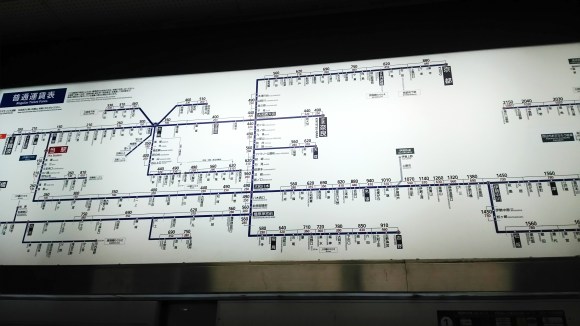
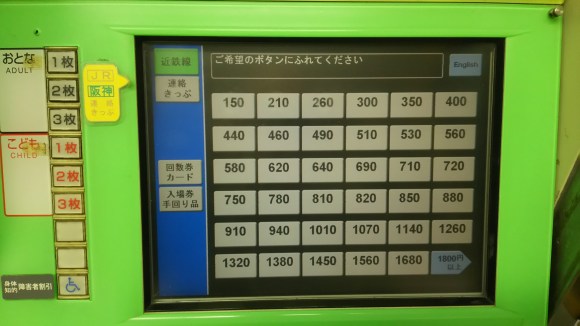
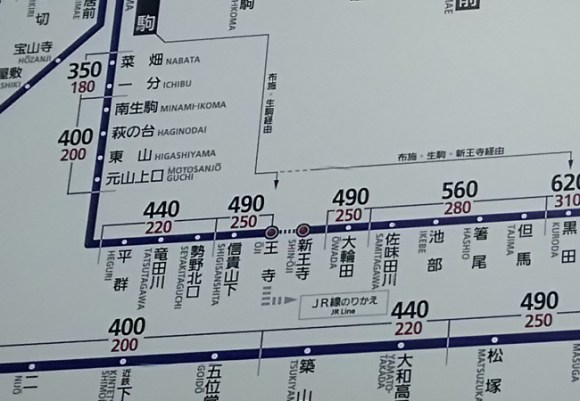
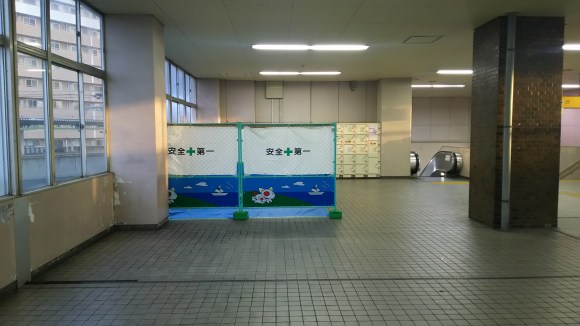
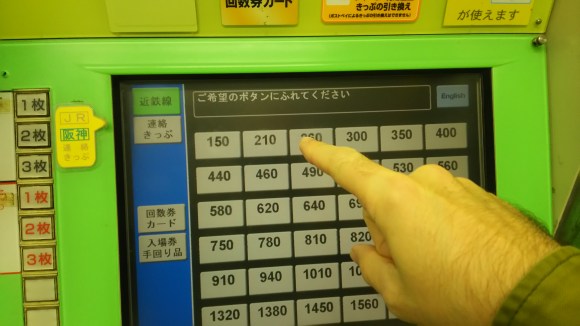
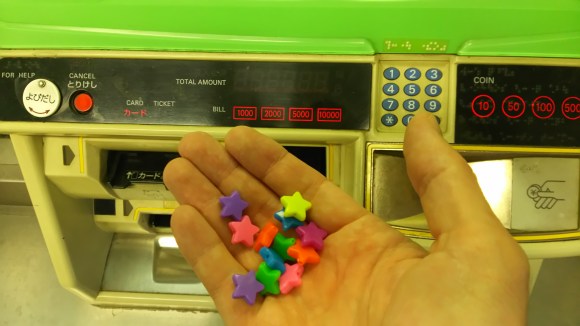
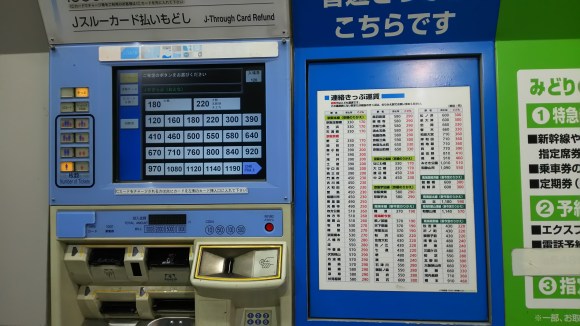
 Human hair from India helps make Japanese buses more efficient
Human hair from India helps make Japanese buses more efficient How honest is Japanese society? So honest this train station is fine with a non-closable “gate”
How honest is Japanese society? So honest this train station is fine with a non-closable “gate” Want to choose the name of Tokyo’s most important new station? Here’s your chance!
Want to choose the name of Tokyo’s most important new station? Here’s your chance! Space World Station becomes the most misleading station name in Japan
Space World Station becomes the most misleading station name in Japan Japan’s new random-destination die-roll train tickets — Amazing bargain for just 36 bucks
Japan’s new random-destination die-roll train tickets — Amazing bargain for just 36 bucks Red light district sushi restaurant in Tokyo shows us just how wrong we were about it
Red light district sushi restaurant in Tokyo shows us just how wrong we were about it Starbucks Japan adds a Motto Frappuccino to the menu for a limited time
Starbucks Japan adds a Motto Frappuccino to the menu for a limited time Historical figures get manga makeovers from artists of Spy x Family, My Hero Academia and more
Historical figures get manga makeovers from artists of Spy x Family, My Hero Academia and more Sandwiches fit for a sumo served up in Osaka【Taste Test】
Sandwiches fit for a sumo served up in Osaka【Taste Test】 McDonald’s new Happy Meals offer up cute and practical Sanrio lifestyle goods
McDonald’s new Happy Meals offer up cute and practical Sanrio lifestyle goods Japan’s massive matcha parfait weighs 6 kilos, contains hidden surprises for anyone who eats it
Japan’s massive matcha parfait weighs 6 kilos, contains hidden surprises for anyone who eats it Haku is…Chihiro’s dead brother? Studio Ghibli fans blown away by Spirited Away theory
Haku is…Chihiro’s dead brother? Studio Ghibli fans blown away by Spirited Away theory Beautiful Red and Blue Star luxury trains set to be Japan’s new Hokkaido travel stars
Beautiful Red and Blue Star luxury trains set to be Japan’s new Hokkaido travel stars New private rooms on Tokaido Shinkansen change the way we travel from Tokyo to Kyoto
New private rooms on Tokaido Shinkansen change the way we travel from Tokyo to Kyoto Pokémon Sleep camping suite and guestrooms coming to Tokyo Hyatt along with giant Snorlax burgers
Pokémon Sleep camping suite and guestrooms coming to Tokyo Hyatt along with giant Snorlax burgers All-you-can-drink Starbucks and amazing views part of Tokyo’s new 170 meter-high sky lounge
All-you-can-drink Starbucks and amazing views part of Tokyo’s new 170 meter-high sky lounge More foreign tourists than ever before in history visited Japan last month
More foreign tourists than ever before in history visited Japan last month Japanese ramen restaurants under pressure from new yen banknotes
Japanese ramen restaurants under pressure from new yen banknotes French Fries Bread in Tokyo’s Shibuya becomes a hit on social media
French Fries Bread in Tokyo’s Shibuya becomes a hit on social media Studio Ghibli releases new action figures featuring Nausicaä of the Valley of the Wind characters
Studio Ghibli releases new action figures featuring Nausicaä of the Valley of the Wind characters Starbucks reopens at Shibuya Scramble Crossing with new look and design concept
Starbucks reopens at Shibuya Scramble Crossing with new look and design concept Studio Ghibli glasses cases let anime characters keep an eye on your spectacles
Studio Ghibli glasses cases let anime characters keep an eye on your spectacles Beautiful Ghibli sealing wax kits let you create accessories and elegant letter decorations【Pics】
Beautiful Ghibli sealing wax kits let you create accessories and elegant letter decorations【Pics】 Studio Ghibli releases Kiki’s Delivery Service chocolate cake pouches in Japan
Studio Ghibli releases Kiki’s Delivery Service chocolate cake pouches in Japan New definition of “Japanese whiskey” goes into effect to prevent fakes from fooling overseas buyers
New definition of “Japanese whiskey” goes into effect to prevent fakes from fooling overseas buyers Our Japanese reporter visits Costco in the U.S., finds super American and very Japanese things
Our Japanese reporter visits Costco in the U.S., finds super American and very Japanese things Studio Ghibli unveils Mother’s Day gift set that captures the love in My Neighbour Totoro
Studio Ghibli unveils Mother’s Day gift set that captures the love in My Neighbour Totoro New Japanese KitKat flavour stars Sanrio characters, including Hello Kitty
New Japanese KitKat flavour stars Sanrio characters, including Hello Kitty New Pokémon cakes let you eat your way through Pikachu and all the Eevee evolutions
New Pokémon cakes let you eat your way through Pikachu and all the Eevee evolutions Disney princesses get official manga makeovers for Manga Princess Cafe opening in Tokyo
Disney princesses get official manga makeovers for Manga Princess Cafe opening in Tokyo Sales of Japan’s most convenient train ticket/shopping payment cards suspended indefinitely
Sales of Japan’s most convenient train ticket/shopping payment cards suspended indefinitely Sold-out Studio Ghibli desktop humidifiers are back so Totoro can help you through the dry season
Sold-out Studio Ghibli desktop humidifiers are back so Totoro can help you through the dry season Japanese government to make first change to romanization spelling rules since the 1950s
Japanese government to make first change to romanization spelling rules since the 1950s Ghibli founders Toshio Suzuki and Hayao Miyazaki contribute to Japanese whisky Totoro label design
Ghibli founders Toshio Suzuki and Hayao Miyazaki contribute to Japanese whisky Totoro label design Doraemon found buried at sea as scene from 1993 anime becomes real life【Photos】
Doraemon found buried at sea as scene from 1993 anime becomes real life【Photos】 Tokyo’s most famous Starbucks is closed
Tokyo’s most famous Starbucks is closed One Piece characters’ nationalities revealed, but fans have mixed opinions
One Piece characters’ nationalities revealed, but fans have mixed opinions We asked a Uniqlo employee what four things we should buy and their suggestions didn’t disappoint
We asked a Uniqlo employee what four things we should buy and their suggestions didn’t disappoint Princesses, fruits, and blacksmiths: Study reveals the 30 most unusual family names in Japan
Princesses, fruits, and blacksmiths: Study reveals the 30 most unusual family names in Japan Free Shinkansen tickets for kids travelling with parents during special JR promotion
Free Shinkansen tickets for kids travelling with parents during special JR promotion Vending machine makes commuters smile at Japanese train station
Vending machine makes commuters smile at Japanese train station New Japan rail pass gives you a week of free rides in a huge space to chase the cherry blossoms
New Japan rail pass gives you a week of free rides in a huge space to chase the cherry blossoms 12 beautiful Japanese train stations by the sea
12 beautiful Japanese train stations by the sea Tokyo’s busiest train stations have a new, free, English-compatible navigation app
Tokyo’s busiest train stations have a new, free, English-compatible navigation app Japanese train operator scraps plan to identify past offenders with facial recognition camera
Japanese train operator scraps plan to identify past offenders with facial recognition camera New JR Shinkansen-inclusive rail pass is a huge bargain, great way to help out a region in need
New JR Shinkansen-inclusive rail pass is a huge bargain, great way to help out a region in need Foreign passenger shoves conductor on one of the last full runs for Japan’s Thunderbird train
Foreign passenger shoves conductor on one of the last full runs for Japan’s Thunderbird train Tokyo gets its first subway station ramen vending machine
Tokyo gets its first subway station ramen vending machine Japan now has drinkable roasted sweet potato, and it’s practically a dessert in a bottle!
Japan now has drinkable roasted sweet potato, and it’s practically a dessert in a bottle! JR East to introduce numbering system at all stations in Tokyo
JR East to introduce numbering system at all stations in Tokyo Ramen vending machine in Tokyo satisfies noodle and gyoza cravings at any time of day or night
Ramen vending machine in Tokyo satisfies noodle and gyoza cravings at any time of day or night $2.34!? Cheapest bullet-train ride in Japan lasts 3 minutes, but memories are forever【Photos】
$2.34!? Cheapest bullet-train ride in Japan lasts 3 minutes, but memories are forever【Photos】 Taste the floor of a Japanese train station with new limited-edition chocolates from Tokyo Metro
Taste the floor of a Japanese train station with new limited-edition chocolates from Tokyo Metro Tokyo making big changes to taxi service and fares, looking for a few “testy” drivers
Tokyo making big changes to taxi service and fares, looking for a few “testy” drivers Japan Railway to allow dogs to ride without cages on special Tokyo-Izu train
Japan Railway to allow dogs to ride without cages on special Tokyo-Izu train
Leave a Reply